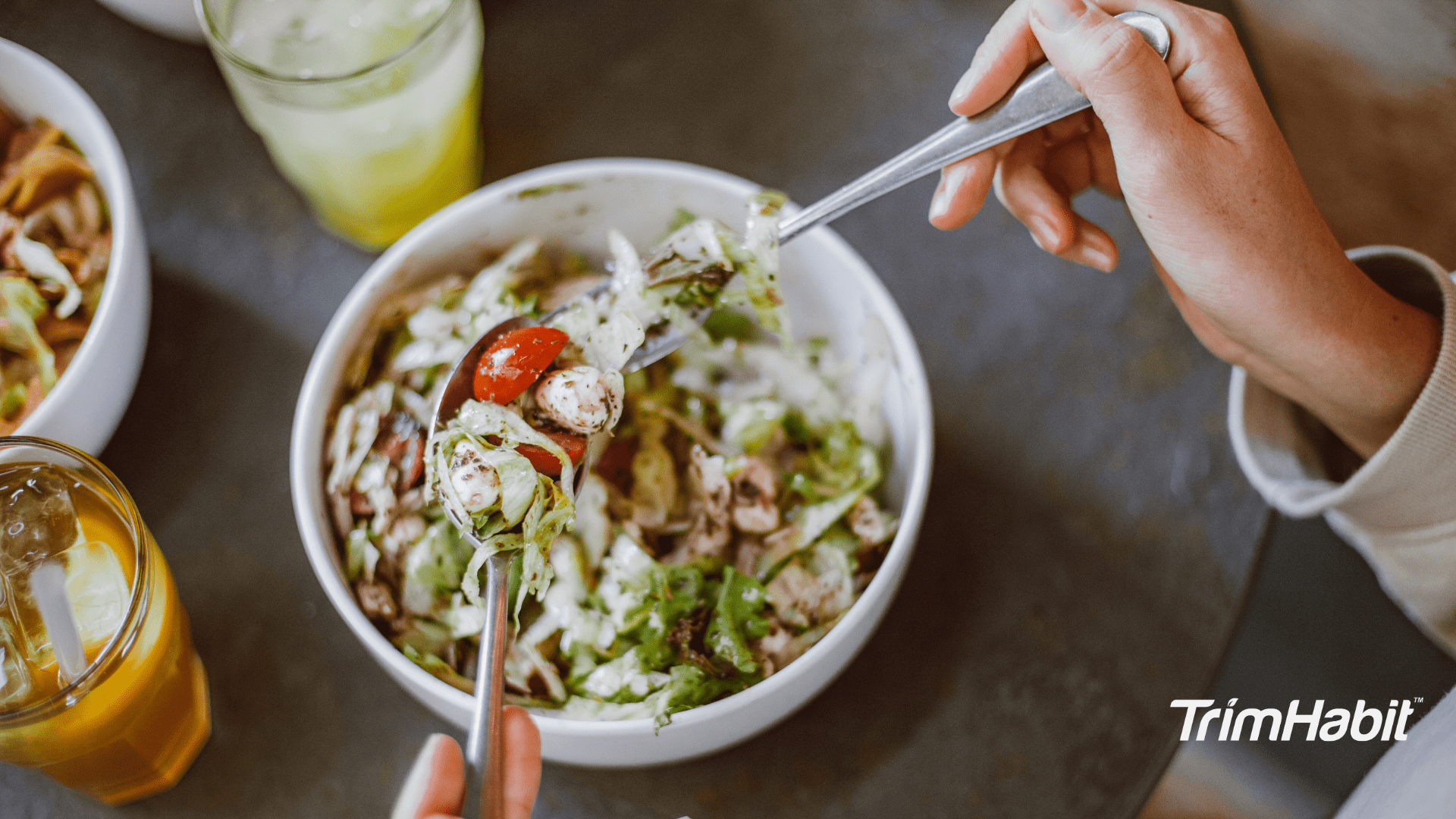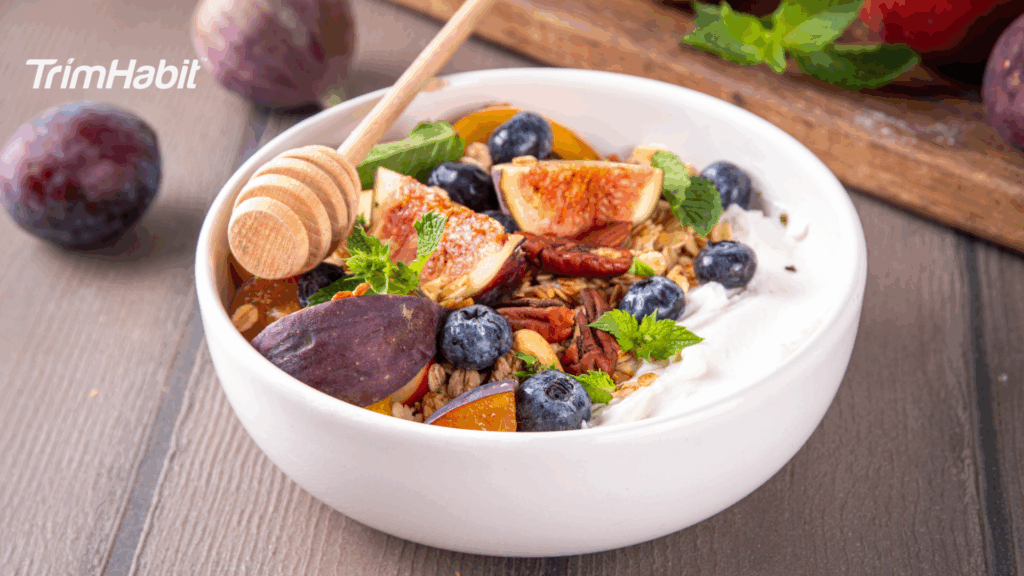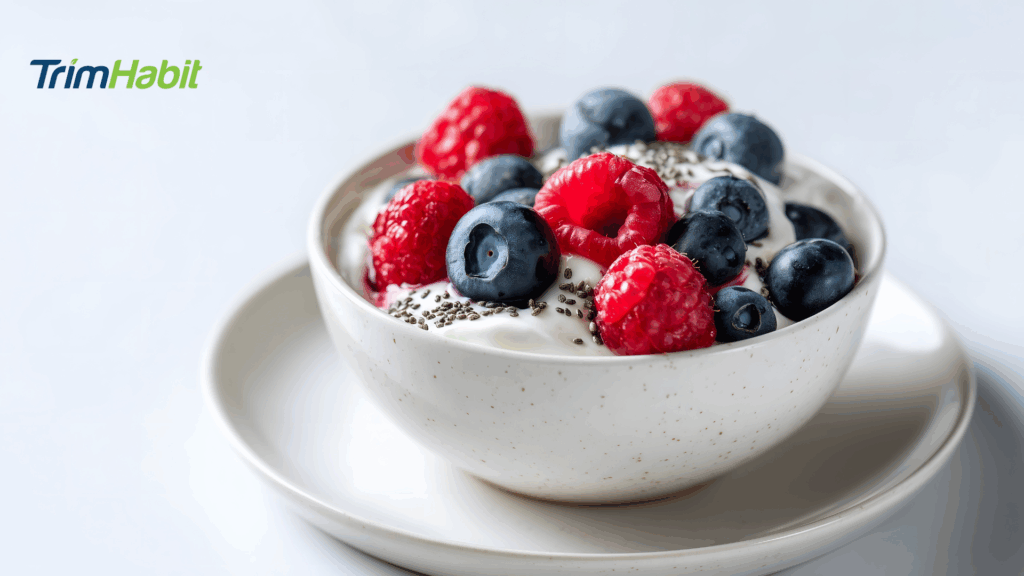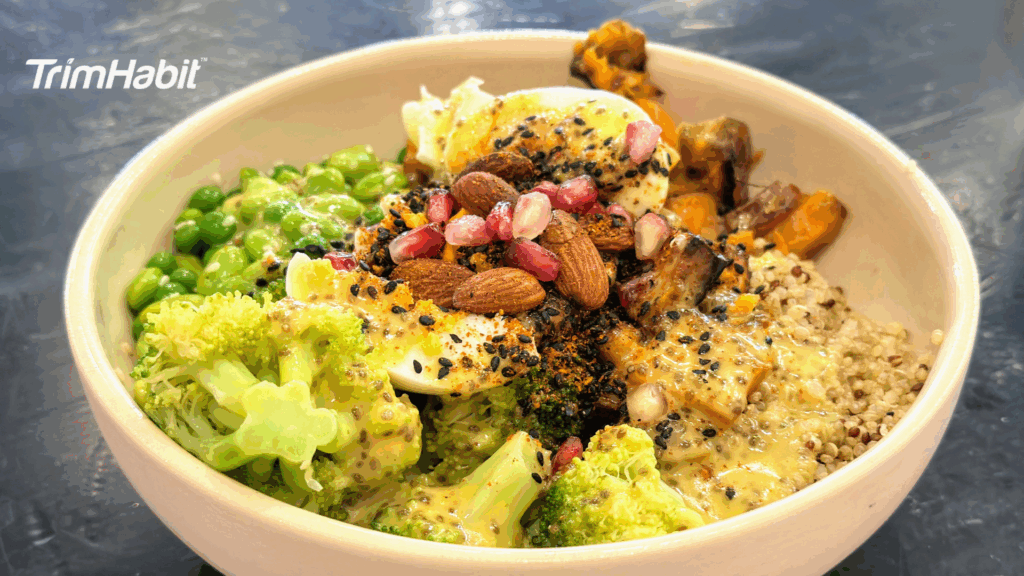Semaglutide has quickly gained popularity as a powerful tool for weight loss, offering real results for those struggling to shed excess pounds. Originally developed to manage type 2 diabetes, this medication works by mimicking a hormone that regulates appetite and blood sugar—leading to reduced hunger, slower gastric emptying, and ultimately, lower calorie intake. But while semaglutide can help jumpstart weight loss, your results still depend heavily on what you eat.
In this article, we’ll break down the best foods to eat while on semaglutide for weight loss, explain why they work, and offer tips to help you build a sustainable, satisfying way of eating that aligns with your weight loss goals.
What Is Semaglutide?
Semaglutide is a medication that mimics a hormone called GLP-1 (glucagon-like peptide-1)1, which can also influence your body mass index. It’s used primarily for two main purposes:
1. Managing Type 2 Diabetes – Semaglutide helps lower blood sugar levels by:
- Stimulating insulin release (only when blood sugar is high)
- Reducing the amount of sugar released by the liver
- Slowing down stomach emptying, which reduces blood sugar spikes after eating
2. Promoting Weight Loss – At higher doses, semaglutide is also prescribed for weight management and is effective when combined with reducing high-fat foods. It can promote weight loss in several ways:
- Suppresses appetite
- Helps people feel full longer
- Leads to reduced food intake and significant weight loss over time
Forms and Brand Names
Semaglutide is available under different brand names depending on its use:
- Ozempic – for Type 2 diabetes (weekly injection)
- Rybelsus – oral tablet form for diabetes
- Wegovy – for weight loss (weekly injection)
How It’s Taken
Usually, a once-weekly injection (except Rybelsus, which is taken daily as a pill). It’s important to start at a low dose and increase gradually to minimize side effects.
Common Side Effects
- Nausea
- Vomiting
- Diarrhea
- Constipation
- Decreased appetite
Not for:
- People with Type 1 diabetes
- Those with a history of medullary thyroid cancer or multiple endocrine neoplasia syndrome type 2
How Semaglutide Works
This hormone regulates appetite, insulin, and blood sugar levels2.
1. Suppresses Appetite – Semaglutide acts on the brain’s appetite-control centers3. It helps:
- Reduce hunger
- Increase feelings of fullness
- Decrease cravings
This leads to reduced food intake and supports weight loss.
2. Stimulates Insulin Secretion – When blood sugar levels are high, semaglutide stimulates the pancreas to release insulin, which helps lower blood sugar1.
3. Reduces Glucose Production – It signals the liver to produce less glucose, which helps prevent blood sugar spikes4.
4. Slows Stomach Emptying – Semaglutide slows down how quickly food leaves the stomach5, which:
- Reduces post-meal blood sugar spikes
- Helps you feel full longer
5. Improves Blood Sugar Control – Combining these effects, semaglutide helps people with Type 2 diabetes maintain more stable blood sugar levels throughout the day6.
Goals Of A Semaglutide-Friendly Diet
A Semaglutide-friendly diet, which is part of a healthy diet, supports the effectiveness of semaglutide while helping to manage side effects and promote overall health. Here are the core goals of this approach:
1. Enhance Medication Effectiveness
Why: Semaglutide works best when paired with a healthy lifestyle.
How: A diet rich in whole, unprocessed foods can help regulate blood sugar levels and optimize weight loss outcomes.
2. Manage Gastrointestinal Side Effects
Why: Semaglutide often causes nausea, bloating, constipation, or diarrhea.
How:
- Eat smaller, more frequent meals.
- Focus on easily digestible foods.
- Avoid greasy, spicy, or overly sweet foods that may trigger discomfort.
3. Support Stable Blood Sugar Levels
Why: Even though semaglutide helps regulate blood glucose, balanced meals prevent spikes and crashes.
How:
- Include lean protein, healthy fats, and fiber in meals.
- Limit refined sugars and highly processed carbs.
4. Promote Satiety and Nutrient Density
Why: Semaglutide reduces appetite, so every bite counts.
How:
- Choose nutrient-dense foods (leafy greens, lean meats, legumes, nuts, seeds).
- Prioritize high-fiber foods to feel full longer and support digestion.
5. Prevent Nutrient Deficiencies
Why: Reduced appetite may lead to insufficient intake of key nutrients.
How: Ensure adequate intake of:
- Protein – supports muscle mass and satiety.
- Calcium, iron, B12, magnesium – often under-consumed during calorie reduction.
- Hydration – to support digestion and energy.
6. Encourage Sustainable Weight Loss
Why: Crash diets or extreme restrictions are counterproductive.
How: Adopt long-term habits:
- Meal planning
- Mindful eating
- Consistent food quality
Best Foods To Eat While On Semaglutide for Weight Loss
Here’s a practical and clear list of the best foods to eat while on semaglutide for weight loss, designed to support satiety, manage side effects, and ensure nutrient intake even with a reduced appetite.
1. Lean Proteins
It helps preserve muscle mass, keeps you full longer, and supports metabolism7.
- Skinless chicken breast
- Turkey
- Eggs and egg whites
- Tofu and tempeh
- Fish (salmon, cod, tuna)
- Low-fat Greek yogurt or cottage cheese
2. High-Fiber Vegetables
It supports digestion, improves fullness, and helps reduce constipation (a common side effect)8.
- Leafy greens (spinach, kale, arugula)
- Broccoli, cauliflower, Brussels sprouts
- Zucchini, cucumbers, bell peppers
- Carrots, green beans, asparagus
Tip: Lightly steam or roast to improve digestibility.
3. Whole Grains
Provides sustained energy and fiber without blood sugar spikes9.
- Quinoa
- Brown rice
- Oats
- Barley
- Whole wheat bread or pasta (in moderation)
4. Healthy Fats (in moderation)
Helps with satiety, hormone production, and nutrient absorption10.
- Avocados
- Nuts (almonds, walnuts, pistachios)
- Seeds (chia, flax, pumpkin)
- Olive oil or avocado oil
- Fatty fish (like salmon and sardines)
5. Low-Glycemic Fruits
Satisfies sweet cravings while keeping blood sugar stable11.
- Berries (blueberries, raspberries, strawberries)
- Apples (with skin)
- Pears
- Peaches
- Citrus fruits (oranges, grapefruit)
6. Hydrating & Gut-Friendly Foods
Helps combat nausea, bloating, and constipation.
- Cucumber, watermelon, celery
- Bone broth or low-sodium vegetable broth
- Plain kefir or probiotic-rich yogurt
- Herbal teas (ginger, peppermint, chamomile)
- Plenty of water, infused with lemon or cucumber if needed
Foods To Limit Or Avoid
- Fried foods (can worsen nausea)
- Sugary drinks and snacks (spikes blood sugar, little satiety)
- Processed foods with added sodium or chemicals
- Large meals (opt for small, frequent meals instead)
- Alcohol (can increase GI side effects and reduce weight loss efficacy)
Sample Meal Ideas
Here are some semaglutide-friendly sample meal ideas to support body weight loss, minimize side effects, and keep you feeling nourished—even with a smaller appetite.
Breakfast Options
1. Greek Yogurt Parfait
- Plain Greek yogurt
- Handful of berries
- 1 tablespoon chia seeds
- Sprinkle of chopped walnuts
2. Veggie Egg Scramble
- 2 eggs + egg whites
- Spinach, bell peppers, onions
- Slice of whole grain toast (optional)
3. Overnight Oats
- Rolled oats + unsweetened almond milk
- Cinnamon, flaxseeds, and sliced apple or banana
- Let sit overnight in the fridge
Lunch Options
1. Grilled Chicken Salad
- Mixed greens (spinach, arugula, romaine)
- Cherry tomatoes, cucumbers, avocado slices
- Grilled chicken breast
- Olive oil + lemon vinaigrette
2. Quinoa Bowl
- Cooked quinoa
- Roasted veggies (zucchini, carrots, broccoli)
- Chickpeas or grilled tofu
- Tahini drizzle or light vinaigrette
3. Tuna Lettuce Wraps
- Canned tuna in olive oil
- Mixed with a bit of Greek yogurt or mustard
- Served in romaine or butter lettuce cups
- Side of sliced bell peppers or baby carrots
Dinner Options
1. Baked Salmon with Veggies
- Salmon filet baked with herbs
- Steamed broccoli and sweet potato
- Drizzle of olive oil
2. Turkey & Zucchini Stir-Fry
- Lean ground turkey sautéed with zucchini, bell peppers, and garlic
- Served over cauliflower rice or brown rice
3. Lentil & Spinach Soup
- Lentils, spinach, diced tomatoes, carrots, onion
- Simmered with vegetable broth and herbs
- Served with a slice of whole grain toast if desired
Snack Ideas (as needed)
- Apple slices with almond butter
- Hard-boiled eggs
- Hummus with raw veggies
- Low-fat cottage cheese with cucumber slices
- Small handful of mixed nuts
- A protein smoothie (unsweetened protein powder, almond milk, frozen berries)
Practical Tips For Eating While On Semaglutide
Here’s a list of practical tips for eating while on semaglutide—perfect for staying on track with your health goals while minimizing discomfort and making food choices easier.
1. Start with Small Portions
Your appetite will likely decrease, so begin with smaller meals and listen to your body. You can always add more if you need to.
2. Eat Slowly and Mindfully
You can take your time with meals. Eating too fast can lead to nausea or bloating. Put your fork down between bites and chew thoroughly.
3. Stick to Regular Meal Times
While you may not feel hungry, try not to skip meals entirely. Eating consistently helps stabilize blood sugar and maintain energy levels.
4. Stay Hydrated—But Not During Meals
Drink plenty of water throughout the day, but avoid drinking large amounts with meals to prevent bloating and discomfort.
5. Choose Easy-to-Digest Foods on Nauseous Days
Go for light, bland options like:
- Toast or crackers
- Applesauce
- Rice
- Bananas
- Bone broth
Avoid greasy, spicy, or overly rich foods when feeling off.
6. Prioritize Protein and Fiber
These keep you fuller longer and support muscle and gut health. Aim to include some protein and fiber in every meal and snack.
7. Avoid Heavy, Fatty, or Sugary Meals
These can increase side effects like nausea, bloating, or sluggishness and won’t support your long-term goals.
8. Prep in Advance When You’re Feeling Good
On days with good energy and appetite, prep meals or ingredients ahead of time so you have go-to options when you’re not up to cooking.
9. Pay Attention to New Food Sensitivities
Some foods you used to enjoy might suddenly not sit well. That’s normal. Keep a food journal if needed to track what feels best.
10. Talk to a Dietitian if Needed
If your appetite drops significantly or you’re unsure you’re meeting your nutrition needs, a registered dietitian can help you build a tailored plan.
When to Seek Professional Guidance
It’s important to know when to seek professional guidance while on semaglutide to ensure you get the most out of your treatment and manage any potential side effects. Here are some key situations where professional guidance may be necessary:
1. Severe or Persistent Gastrointestinal Issues
If you experience nausea, vomiting, diarrhea, constipation, or bloating that doesn’t improve or becomes intolerable, it may be time to consult your healthcare provider. These side effects are common but should not be severe or chronic.
2. Signs of Nutrient Deficiency
If you’re noticing symptoms like fatigue, dizziness, hair thinning, or brittle nails, you may not get enough nutrients. A dietitian can help identify deficiencies and suggest ways to improve your intake.
3. Difficulty Eating or Drinking
If your appetite is significantly reduced and you are unable to consume enough calories or stay properly hydrated, a healthcare provider can help adjust your plan to support adequate nutrition and hydration.
4. Uncontrolled Blood Sugar or Weight Loss Issues
Even though semaglutide helps control blood sugar and supports weight loss, a professional can monitor and adjust your treatment plan as needed if you’re experiencing issues such as blood sugar spikes or excessive weight loss.
5. Mental or Emotional Concerns
If you notice an increase in mood swings, anxiety, or depression while on semaglutide, it’s crucial to speak with a healthcare professional. These medications can sometimes have effects on mental health, and it’s important to get the right support.
6. Sudden or Severe Health Changes
If you notice sudden or drastic health changes, such as rapid weight loss, extreme fatigue, heart palpitations, or severe pain, seek medical help immediately.
7. Long-Term Side Effects or Uncertainty About the Medication
If you’re unsure about how long to stay on semaglutide or have questions about long-term effects, it’s always best to have a detailed discussion with your healthcare provider.
Early intervention is key to managing your health effectively while on semaglutide in any of these situations. Your healthcare provider or dietitian can help tailor recommendations and ensure you stay on track with your weight loss and health goals.









